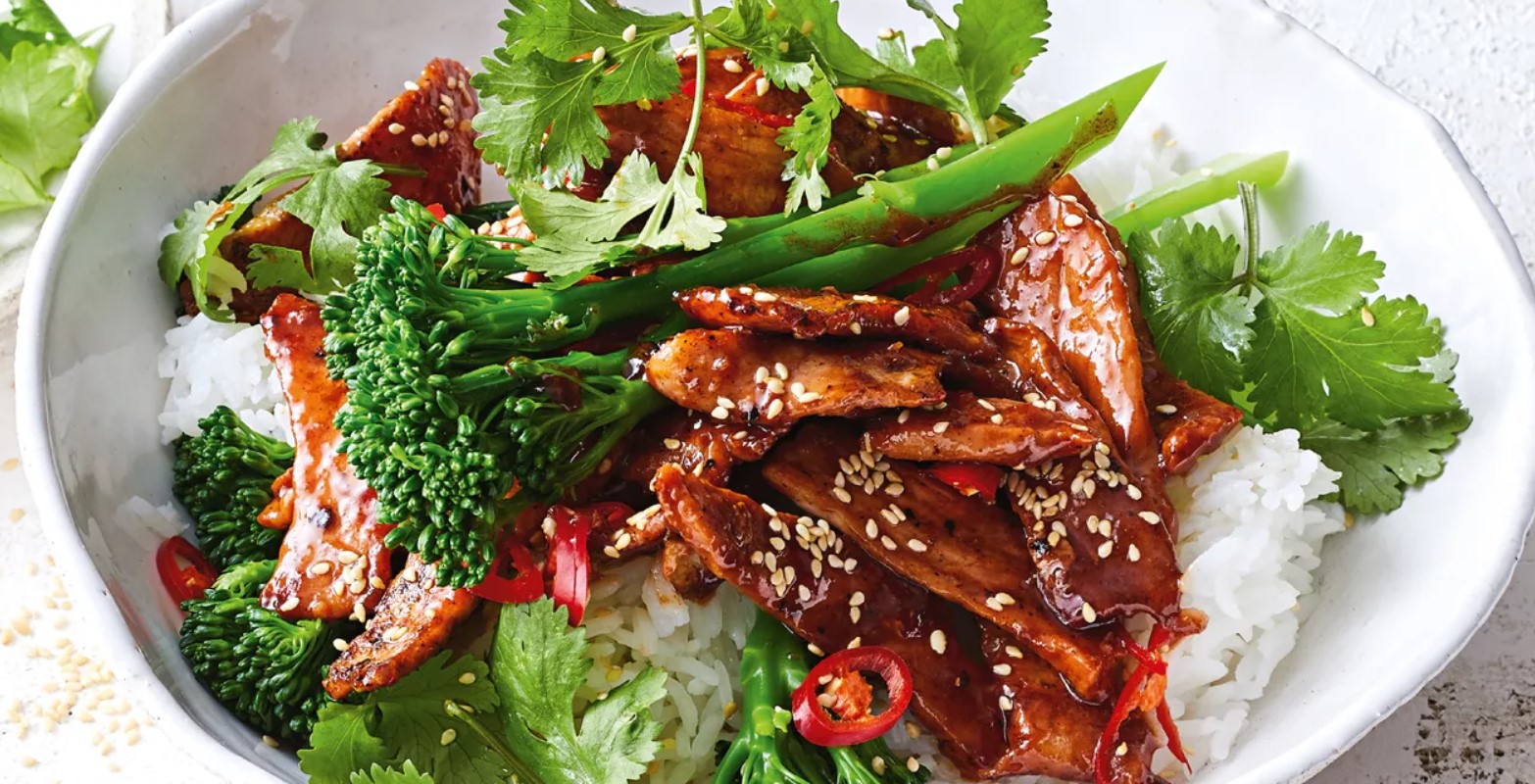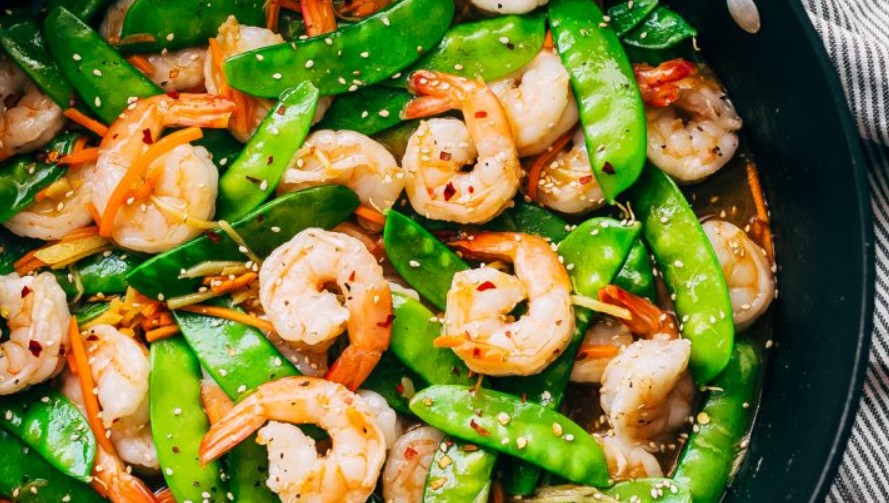I find the idea of meatloaf a little questionable, as it is essentially a loaf made entirely of meat. However, when prepared properly, it is incredibly enjoyable. It is incredibly satisfying, comforting, and delicious, to the point where I eagerly anticipate eating the leftovers for the next few days (especially in the form of a mouthwatering meatloaf sandwich). This Classic Homemade Meatloaf recipe embodies the traditional meatloaf that we all adore – it is tender, juicy, bursting with flavor, and topped with a delightful tangy tomato glaze. It pairs perfectly with creamy mashed potatoes and crisp green beans, creating a plate of pure comfort.
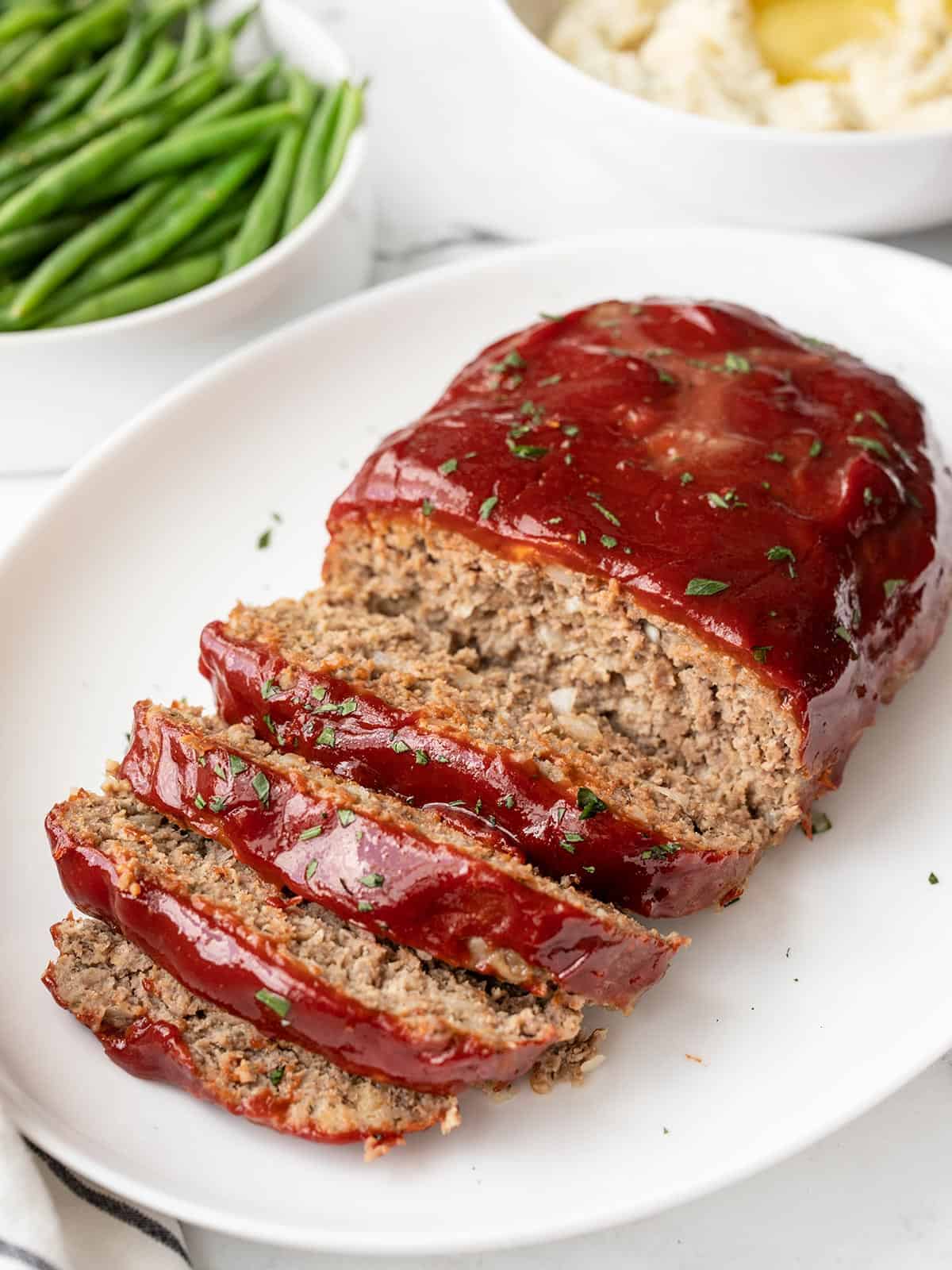
The Secret to Good Meatloaf
Milk plays a vital role in creating a delicious meatloaf. Though it may seem unconventional, its inclusion makes a remarkable impact. By providing hydration to the breadcrumbs used as a binding agent, milk ensures that the meatloaf remains incredibly moist and tender.
In the process of testing this recipe, I decided to make one batch without milk to observe any potential differences. I must emphasize that the disparity was significant. The milk-free meatloaf turned out dense, slightly tough, and notably drier compared to the meatloaf made with milk. Therefore, it is highly recommended not to skip this ingredient. Additionally, I believe that non-dairy milk would yield similar results.
Loaf Pan or Baking Sheet?
When it comes to meatloaf, there are two camps: those who prefer baking it in a loaf pan and those who opt for a baking sheet. Personally, I stand with the baking sheet team, although the final decision ultimately depends on individual preference. I find that loaf pans tend to hinder evaporation, resulting in a slightly soggy bottom. On the other hand, baking sheets allow for more evaporation, resulting in a perfectly moist and flavorful meatloaf.
However, if you find shaping to be challenging or desire to achieve perfectly square edges, opting for a loaf pan may be more suitable for you.
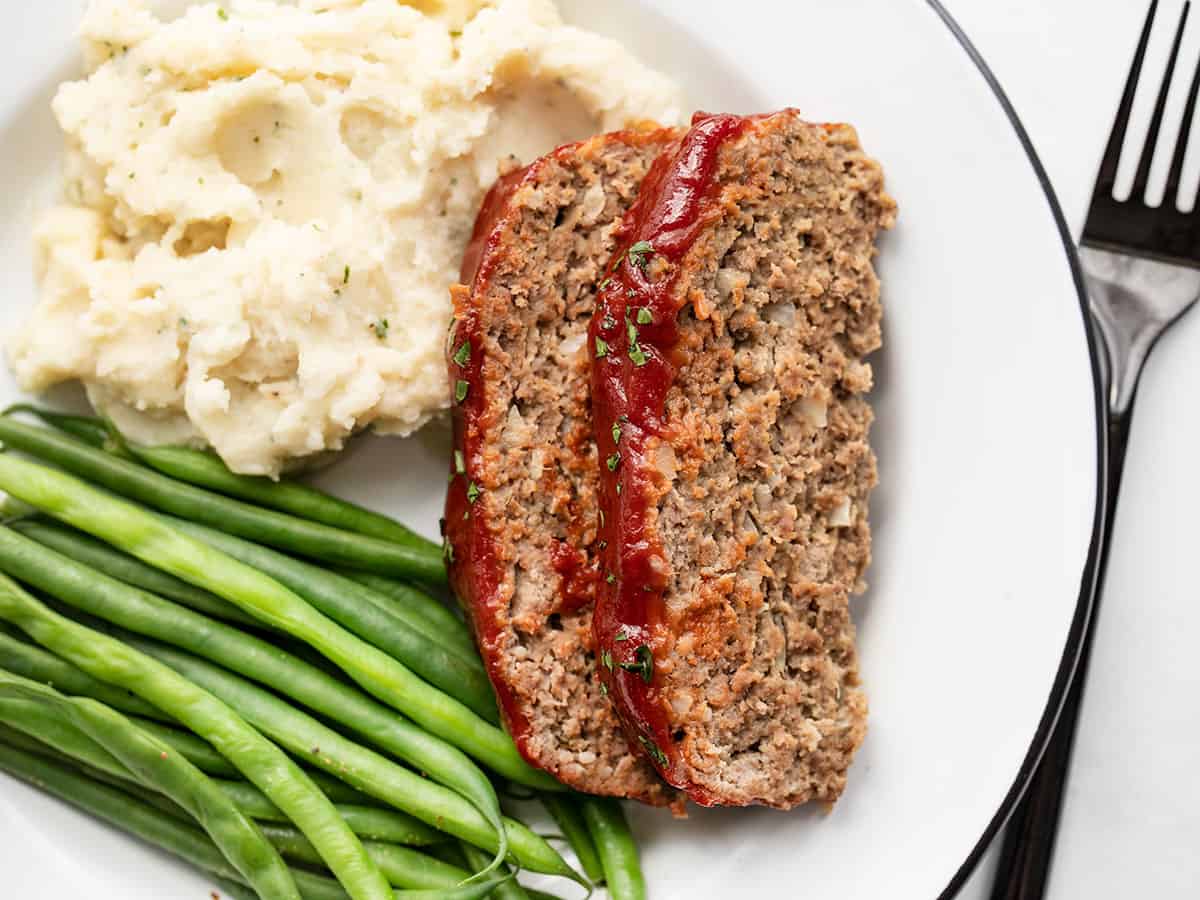
How to Keep Meatloaf from Falling Apart
Here are a few tips on making a meatloaf that maintains its shape when sliced.
What to Serve with Meatloaf
In addition to my preferred combination of Mashed Potatoes and Steamed Green Beans, I highly recommend trying these delightful side dishes that complement meatloaf perfectly:

How to Make Classic Meatloaf – Step by Step Photos
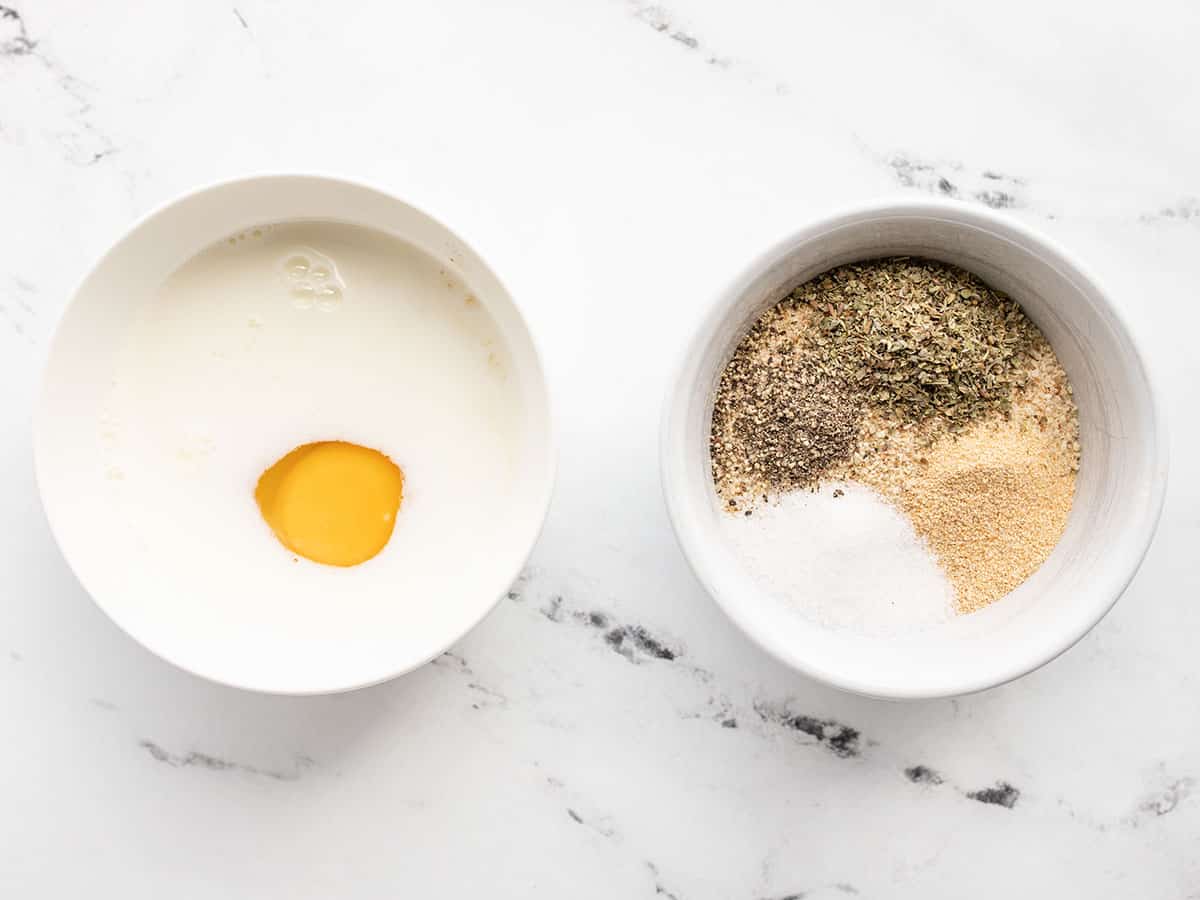
To begin, set the oven temperature to 350ºF. To reduce the need for excessive mixing, it is advisable to pre-mix a portion of the meatloaf ingredients. In a small bowl, combine ⅓ cup of milk, one large egg, and 1 teaspoon of Worcestershire sauce. In another bowl, mix together ½ cup of breadcrumbs, ½ teaspoon of garlic powder, 1 teaspoon of Italian seasoning, ¼ teaspoon of freshly cracked pepper, and 1 teaspoon of salt.
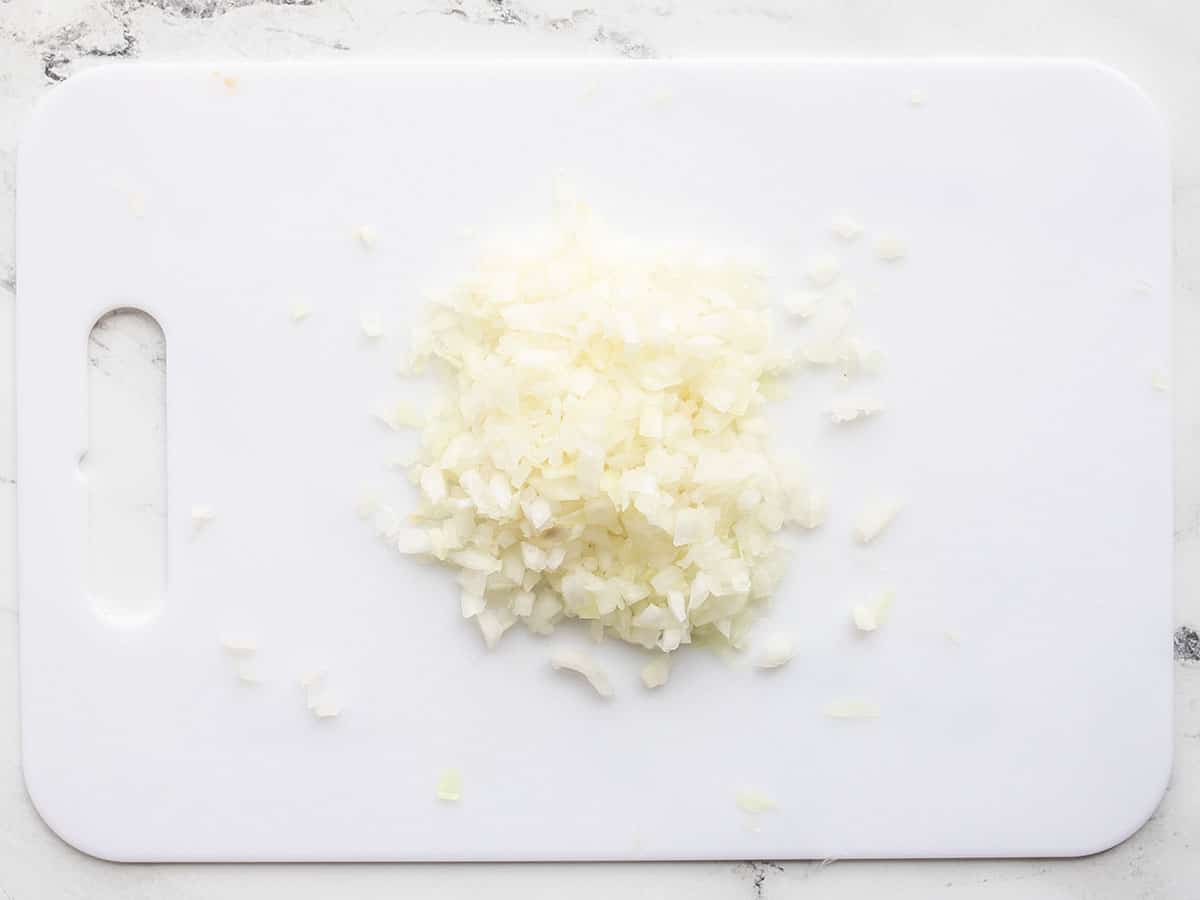
Finely mince approximately ½ cup of onion, ensuring that it is chopped as finely as possible. Avoid chunky onion pieces, as they can cause the meatloaf to easily fall apart.

Combine the milk mixture, breadcrumb mixture, and minced onion with 1.5 lbs of ground beef (85/15) using your hands. Mix gently until all ingredients are well incorporated, taking care not to overmix.
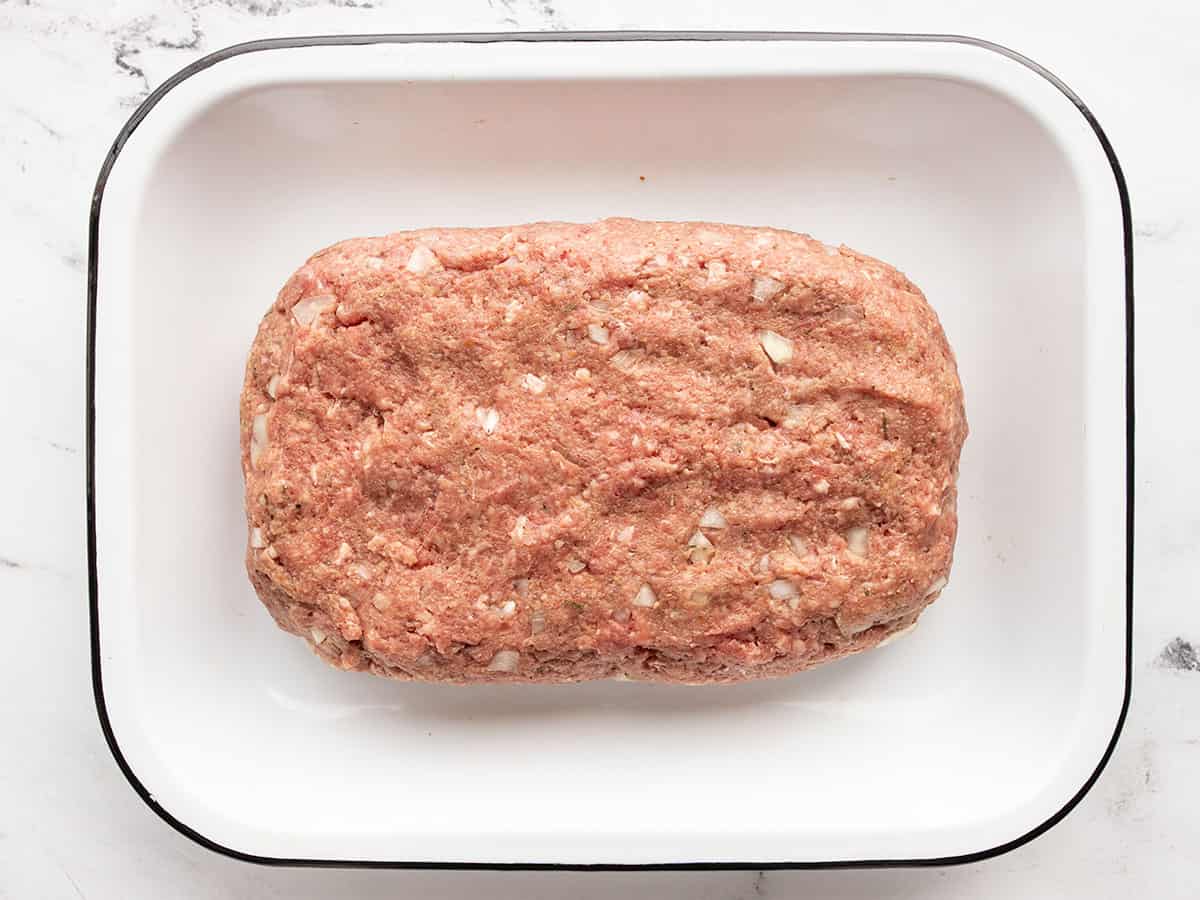
To shape the meatloaf, spread the mixture evenly on a baking sheet or dish with raised edges, forming a loaf that measures around 8 inches in length, 4 inches in width, and 2 inches in height.
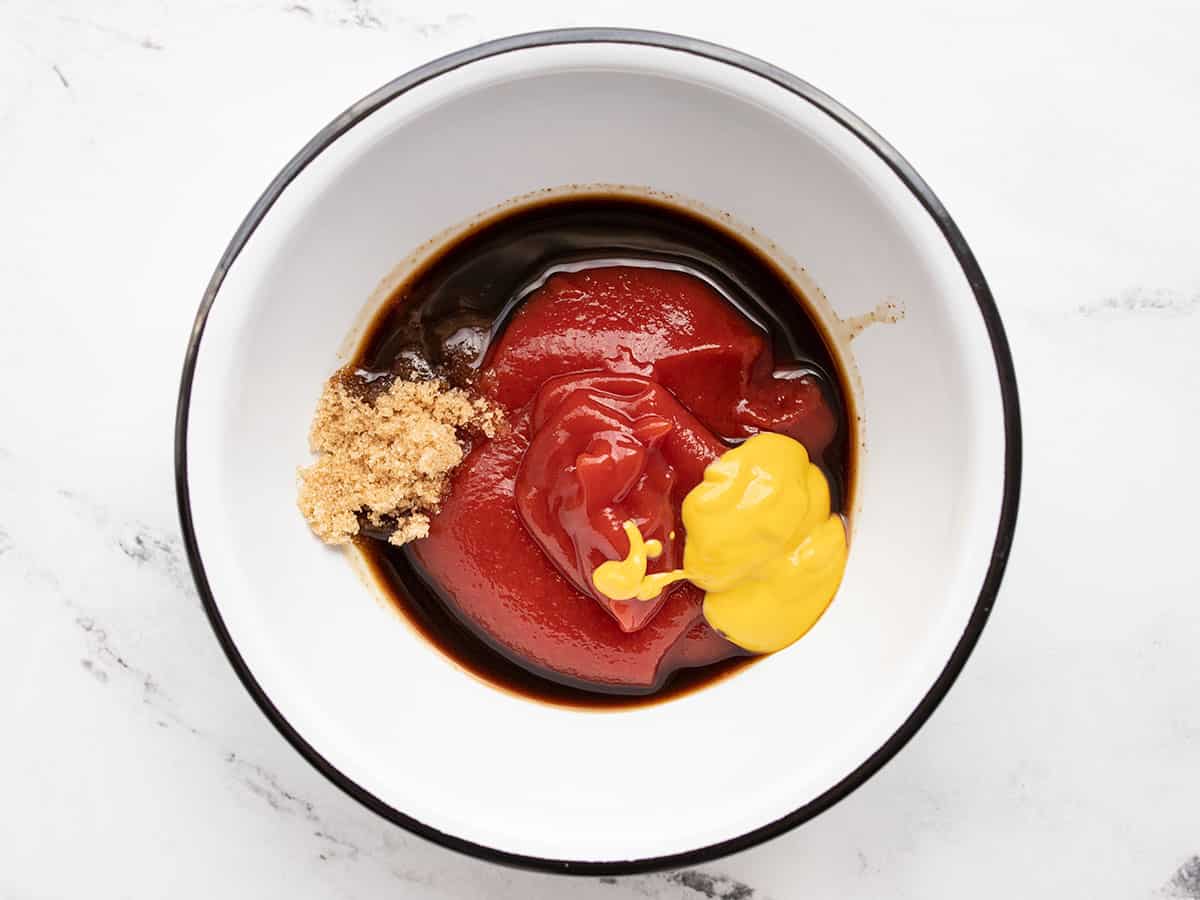
Afterward, mix the ingredients for the glaze by stirring together ½ cup of ketchup, 1 tablespoon of brown sugar, 1 teaspoon of yellow mustard, and 1 tablespoon of Worcestershire sauce.

Apply the glaze to both the top and sides of the meatloaf, ensuring it is evenly distributed.
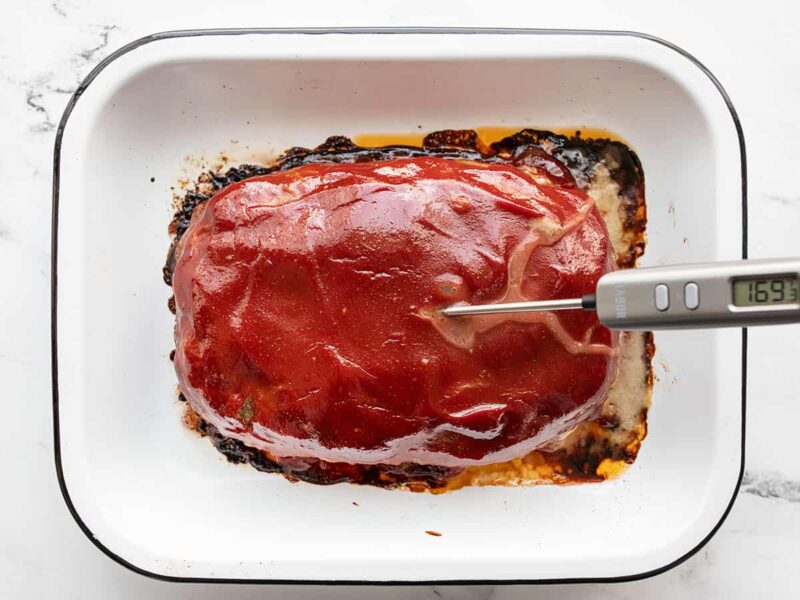
Place the meatloaf in a preheated oven set to 350ºF and bake for 50-55 minutes, or until the internal temperature reaches 165ºF. Allow the meatloaf to rest for approximately 10 minutes before slicing and serving.


